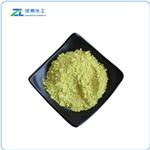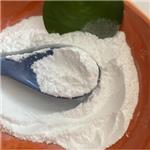Multifaceted Roles of Pyrene
Apr 11,2025
Pyrene had cytotoxic effects and oxidative damage on human HepG2 cells. Due to the unclear response mechanisms of bacteria to PAHs, this study detected the transcriptional changes in Escherichia coli under different pyrene concentrations using transcriptome sequencing technology.

The Effects and Toxicity of Different Pyrene Concentrations
Pyrene, a typical compound of PAH pollutant lineages, is a polycyclic aromatic hydrocarbon (PAH) with four benzene rings, and it is commonly used as an indicator for detecting PAHs contamination and in studies of the microbial degradation of PAHs. Due to the relatively high molecular weight and number of benzene rings, the degradation of pyrene in the environment is more difficult to analyze than lighter PAH compounds, and its physiological and ecotoxicological toxicity is more obvious, thus necessitating further research into pyrene. Therefore, aiming to explore the stress response of bacteria to PAHs, we conducted transcriptome analysis of the response to it stress utilizing a key model strain, Escherichia coli. After transcriptome sequencing, we characterized the global expression of the response to stress. Moreover, the changes in the growth status of E. coli over time under different pyrene concentrations were also identified. Our research presented phenotypic evidence of bacterial response to pyrene stress, revealing the metabolic pathways related to PAH resistance. In addition, this research will provide a preliminary basis for further study on the key regulatory genes and response pathways of stress mechanisms and provide a reference for related research on microorganisms under stress from other exogenous substances.[1]
The adaptation of bacteria to external environmental pressure is often accompanied by transcriptional regulation. This study investigates the transcriptional changes in E. coli under different concentrations of it, with a focus on elucidating the key metabolic pathways involved in its response to pyrene stress. This study provides evidence for the expression patterns of mRNAs and sRNAs in E. coli exposed to different concentrations of pyrene. In our study, significant up-regulation of genes related to transport was observed, indicating that E. coli may avoid damage by transporting pyrene out of the cell. In addition, we also investigated key genes associated with significantly differentially expressed sRNAs, which could serve as potential evidence for the involvement of the sulfate reduction pathway in the oxidation of PAHs. Moreover, various oxidoreductases in E. coli may also oxidize PAHs, which could be a mechanism by which E. coli responds to pyrene stress. Transcriptomic analysis can be used to determine changes in mRNAs and sRNAs induced by different concentrations of pyrene, laying the foundation for future research. However, this study lacks further validation experiments of these key genes; therefore, further study will be carried out in the future.
Pyrene: A Probe to Study Protein Conformation and Conformational Changes
Biochemists and biophysicists have an arsenal of fluorescent probes at their disposal to understand the molecular organization of biological molecules. This review describes the use of pyrene and its derivatives as a probe to study biomolecules. Pyrene is one of the oldest probes to be employed to study a wide range of biomolecules: Lipids, proteins and nucleic acids. The review will focus only on the use of pyrene to monitor conformation and conformational changes in proteins in aqueous solutions. A brief introduction of the salient fluorescence spectroscopic features of pyrene is provided, that may be of relevance from a biochemical perspective. The exchangeable class of apolipoproteins is used to illustrate the application of pyrene as a fluorescent probe to study protein conformation, conformational changes and dynamics. Finally, a few examples where pyrene has been used to study protein conformation are discussed. Discussion of pyrene as a probe to study lipids and nucleic acids in membrane biophysics, cell biology and cellular biochemistry is beyond the scope of this review; the reader is referred to comprehensive reviews on these topics.[2]
The stoichiometry of labeling is calculated using the molar extinction coefficient of pyrene (~40,000 M−1 cm−1 at 338 nm in methanol). While 1:1 pyrene to cysteine stoichiometry is optimal, ratios of <1 may still be used to obtain information regarding spatial proximity and probe microenvironment. Information obtained from higher ratios need to be considered with caution as there may be non-specific labeling or labeling at sites other than the desired cysteine residue(s). It is important to ensure that the overall fold and function of the protein are not significantly altered as a result of the amino acid substitution(s) and pyrene labeling. Secondary structural analysis by circular dichroism (CD) spectroscopy has been typically employed to assess potential changes in overall folding; in cases where the presence of the pyrene moiety affects CD measurements, infrared spectroscopy has been employed as a useful alternative. A major advantage of using it for conformational analysis is its high extinction coefficient, which requires minimal amounts of protein for study. Pyrene-labeled proteins can be analyzed at very low (5–10 μg/mL), physiologically relevant protein concentrations. Its unique spectral features are ideal for studying protein-protein interactions under various conditions such as subunit interaction and oligomerization, aggregation and misfolding, and polymerization. However, care must be taken to ensure that the presence of pyrene does not affect the overall fold of the protein. Further, pyrene-labeled proteins can be used with native samples (for example, to study interaction of pyrene-labeled apoE with lipoproteins isolated from plasma) with minimal interference from intrinsic fluorescence of proteins, except when used as an acceptor for fluorescence resonance energy transfer.
Pyrene is one of the most well characterized probes in the fluorophores toolbox that has been used to study proteins, lipids, nucleic acids and other biomolecules. This review has explored the use of it as a potential fluorophore to probe protein conformation using specific examples for illustrative purposes (it was not meant to cite all examples of pyrene-labeled proteins). It can be effectively used to study various scenarios such as intra-molecular (including intra domain and inter-domain) proximity relationships, inter-molecular interactions such as protein oligomerization, aggregation and polymerization, and to examine transmembrane organization, protein dynamics and folding/unfolding processes. It will be a challenging task to see if pyrene fluorescence can be exploited further to study proteins in the complex biological systems.
Pyrene is highly emissive when attached to the RNA duplex but not to the DNA duplex
Through binding and fluorescence studies of oligonucleotides covalently attached to a pyrene group via one carbon linker at the sugar residue, we previously found that pyrene-modified RNA oligonucleotides do not emit well in the single-stranded form, yet the attached it emits with a significantly high quantum yield upon binding to a complementary RNA strand. In sharp contrast, similarly modified pyrene–DNA probes exhibit very weak fluorescence both in the double-stranded and single-stranded forms. The pyrene-modified RNA oligonucleotides therefore provide a useful tool for monitoring RNA hybridization. The purpose of this paper is to present the structural basis for the different fluorescence properties of pyrene-modified RNA/RNA and pyrene-modified DNA/DNA duplexes. The results of absorption, fluorescence anisotropy and circular dichroism studies all consistently indicated that the pyrene attached to the RNA duplex is located outside of the duplex, whereas the pyrene incorporated into the DNA duplex intercalates into the double helix. 1H NMR measurements unambiguously confirmed that it attached to the DNA duplex indeed intercalates between the base pairs of the duplex. Molecular dynamics simulations support these differences in the local structural elements around the pyrene between the pyrene–RNA/RNA and the pyrene–DNA/DNA duplexes.[3]
References
[1]Zhu H, Gong L, Wang R, Shao Z. The Effects and Toxicity of Different Pyrene Concentrations on Escherichia col Using Transcriptomic Analysis. Microorganisms. 2024 Feb 4;12(2):326.
[2]Bains G, Patel AB, Narayanaswami V. Pyrene: a probe to study protein conformation and conformational changes. Molecules. 2011 Sep 14;16(9):7909-35.
[3]Nakamura M, Fukunaga Y, Sasa K, Ohtoshi Y, Kanaori K, Hayashi H, Nakano H, Yamana K. Pyrene is highly emissive when attached to the RNA duplex but not to the DNA duplex: the structural basis of this difference. Nucleic Acids Res. 2005 Oct 19;33(18):5887-95.
- Related articles
- Related Qustion
- Toxicological data and environmental behavior of pyrene Apr 15, 2022
Pyrene is an organic compound with chemical formula C16H10, light yellow monoclinic crystal (pure product is colorless), aromatic, combustible, insoluble in water
Perfluoro(2-methyl-3-pentanone) (PFMP) is a fire protection fluid,which is a replacement for chlorofluorocarbons (CFCs) and Halons.....
Apr 11,2025Chemical MaterialsYohimbine hydrochloride is a supplement derived from yohimbe bark, used for erectile dysfunction and weight loss.....
Apr 11,2025API








